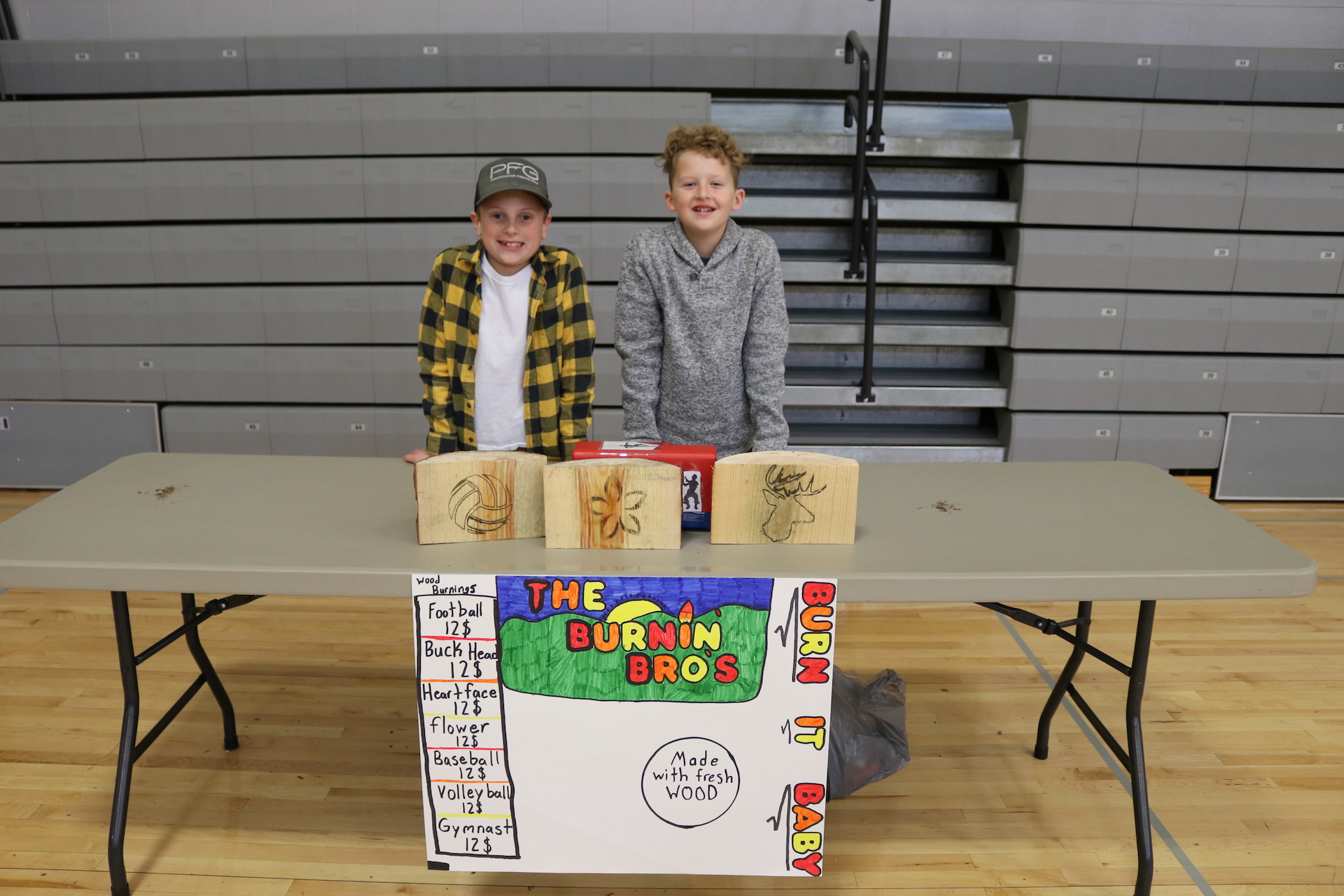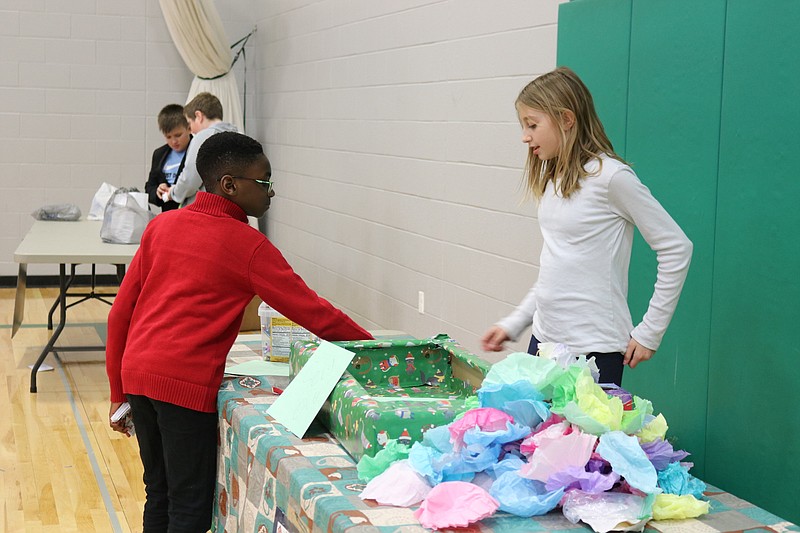The Blair Oaks Intermediate School gym was transformed into a bustling marketplace Thursday as fifth-grade students participated in "Market Day," a hands-on activity to teach them economic concepts.
"I thought it was an engaging way to teach economics -- something that they would remember forever," said teacher Tiffany Fitzpatrick, who started the event last year.
She said she hopes students learn about consumer demand, pricing and product quality.
It also gives them a chance to work on their public speaking, Fitzpatrick said. Students made advertisements in which they explained their product, the cost and the name. It was a chance to exercise creativity in naming and creating their products.
Then students set up tables in the gym where they worked in pairs to sell their products. Students could buy other students' products with their school bucks that they earned for good character, academic performance, participation and effort.
Many of the boys and girls wore suits, dress shirts, ties and blazers since they were told to "dress as professional entrepreneurs."
Laci Libbert and Haley Wilde sold multi-colored checkerboards on squares of cardboard and wood.
The wood boards were popular and sold out quickly.
Wilde and Libbert said they like to play checkers and knew their classmates did, too.
"You have to try and do something that you know other people would like, and more unique," Wilde said.
Addilynn Sneller's table had plastic cups with tissue paper over the top. For a few dollars, participants could smash through one of the cups to see if they would win a prize inside.
"Me and my partner were thinking of something 'mystery,'" Sneller said. They came across a similar idea on YouTube.
"And we didn't think it would be a big hit, but ..." Sneller said, gesturing to the empty box in front of her and the mountain of used tissue paper beside it. She said they ended up going through 60 cups.
Sneller said she learned about supply and demand.
"Don't have too little," she said.
Kinley Schlueter sold painted rocks. While Schlueter still had a few rocks left, she said the rocks with Falcon designs or softballs on them went quickest.
Zoey Webb sold Oobleck in dark blue, teal, green, red, pink, purple and white.
"I learned that, from being a tiny business, you can grow and make more of the stuff and find out what people like," Webb said.
Other tables sold bracelets, little sculptures, rock candy, phone grips and stands, stickers, fidget spinners and plushes.
Owen Bruemmer and Ryker Heislen used a wood-burning pen, which uses an ink that reacts with heat, to put wood-burned designs on stumps.
Bruemmer and Heislen reacted to increased demand when they realized people especially wanted the deer head design, so they brought extra. In total, they sold around 40.
"If the demand is high, you raise the price, and if the demand is low, you lower the price," Heislen said.
"We were going to have them at $8, but then we raised them up to $12 cause so many people wanted them," Bruemmer said.
Rylee McCasland and Ainsley Weider sold small clay charms. They put them in little plastic bags, stuffed them with paper confetti and put in a business card.
"And we've been watching whenever people come if we need to raise the price or lower it cause of supply and demand," Weider said.
Both thought they might like to be entrepreneurs some day.
Students calculated their profit afterward by subtracting their expenses from their income.
If students had surplus left over, they learned that they needed to lower their price or increase the quality of their product. If they sold out, they knew demand was high, and they could increase the price.
 Anna Campbell/News Tribune
Owen Bruemmer and Ryker Heislen stand behind their "Burnin' Bros" table, at which they sold wood-burned designs. Having spent only a few dollars on their poster and the wood-burning marker, which contains a chemical that reacts with heat, they sold out on all their designs and enjoyed a significant profit.
Anna Campbell/News Tribune
Owen Bruemmer and Ryker Heislen stand behind their "Burnin' Bros" table, at which they sold wood-burned designs. Having spent only a few dollars on their poster and the wood-burning marker, which contains a chemical that reacts with heat, they sold out on all their designs and enjoyed a significant profit.
